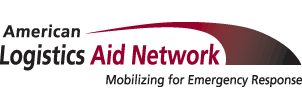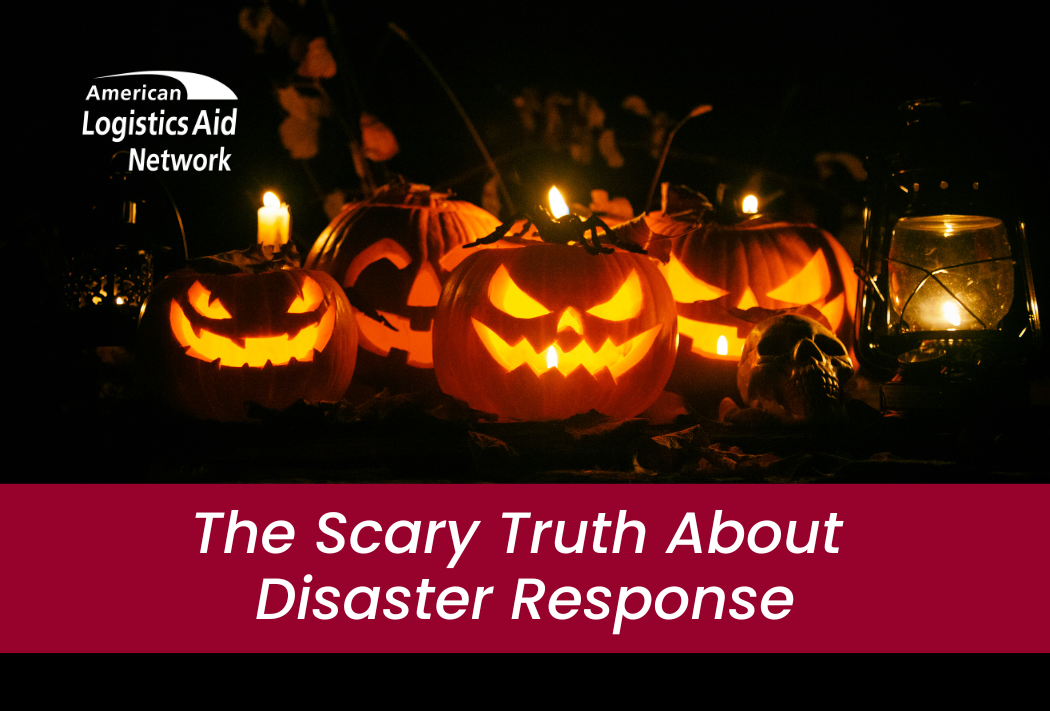A few years ago, I wrote a story about several things disasters have in common with horror films.
If I were writing that same story now, I’d have even more parallels to share, because over the past year, a lot of the federal funding that was once allotted to disaster relief has been slashed a la Jason Vorhees. And that has many disaster relief professionals shaking in their shoes.
Thankfully we still have several helpful – and often underutilized – tools at our disposal.
Anticipating Friday The 13th
The first is your organizations’ improved supply chain disaster preparation. (And before you roll your eyes and say that advice is about as useful as telling you not to run into the woods or an abandoned barn, hear me out).
In a study that ALAN helped research several years ago, we discovered that the communities that were the most resilient after disasters were the ones whose day-to-day supply chains had gotten back to normal the most quickly.
You read that right. It wasn’t the towns where first response organizations were able to establish relief shelters the fastest. Nor was it the ones where long-term relief organizations stayed the longest. It was the ones where companies like yours figured out how to get their goods flowing to the usual destinations – like grocery stores, restaurants and food banks – in a disaster-affected community as soon as possible.
For that reason, I’d like to encourage you and your company to significantly step up your supply chain disaster planning – and to plan for the worst this Halloween season – bearing in mind that you won’t just be helping your company and your employees. You’ll be making a hugely positive difference in the disaster relief ecosystem at a time when it’s needed most.
Building A “Scream” Team
The second tool is disaster response collaboration. Or perhaps I should say “true disaster response collaboration,” because even if we say we want to be team players, most of us are admittedly at least a little reluctant to share any kind of insight or best practice with another outside organization, especially it it’s a competitor.
ALAN sees this all the time during the disaster simulations we lead. As the game organizer, we know that there actually are enough resources to go around, provided everyone is forthcoming and cooperative. But what usually winds up happening is that things quickly devolve into chaos and shortages because players are hoarding or holding back.
It’s a big reason why we’ve formed two highly collaborative groups over the past five years, (one for industry associations and the other for nonprofits) that are still going strong – and why we’re now working on establishing strong cross-sector disaster response collaborations in several communities across the country.
But in order for collaboration to work, it can’t just be organizations like ours who are championing it. Private sector participation is imperative.
In light of that, I hope your company will consider building – or joining – your own version of a disaster preparation team. And, I hope every participant will check their logo and ego at the door, because when multiple organizations truly work together in the name of improved disaster response and relief, amazing things can happen.
Just When You Thought It Was Safe . . .
If this story really were a horror movie, this is probably where I’d pull out a jump scare just to reiterate that even when things seem safe, these are still scary times for all of us in the disaster ecosystem.
But thankfully, I’m a humanitarian professional, not Wes Craven, so instead, I’ll wrap things up with a few pragmatic disaster contingency planning and collaboration building suggestions drawn from our own recent Close Encounters with disasters:
Assume that fuel and/or power will be an issue for your DCs and other distribution points. You know how the lights always go out at some point during a scary movie? Regardless of disaster, power or fuel challenges are usually a given. And even the alternate sources that your company has on hand might not be enough. Look into the possibility of procuring additional back-up power sources like extra generators for your facilities. And think out of the box about how you can deal with other potential fuel shortfalls – like arranging for an on-call tanker of fuel to be at the ready to help provide enough fuel for your employees to get to and from work.
Don’t just worry about your facilities. Worry about their connectivity. When the Lahaina fires hit, one of the biggest immediate challenges wasn’t just the loss of so many buildings, it was the fact that the fires also burned most of the area’s communications infrastructure that was needed to coordinate relief efforts. Don’t be like those hapless movie characters who assume that the phone lines will work when they finally call for help. Take the time to test your alternative communications systems while things are calm using live transactional data. Also consider establishing reciprocal communications contingency agreements with companies that operate nearby – even if those companies are competitors.
When you’re looking for companies to collaborate with, industry associations are an excellent place to start. Much like it’s always a good idea for a scary movie’s characters to stay together, your disaster management collaboration efforts will be more effective if you stick close to your friends – including trade organizations like ALAN’s industry partners. They’re an excellent place to find other potential collaborative partners, and they’re often a great source of key disaster preparation and response information.
Stay tuned for the sequel. Last but not least, keep ALAN on speed dial. We offer a number of resources that are designed to help strengthen businesses’ and communities’ disaster preparation and response efforts (including our free Supply Chain Intelligence Center, disaster-specific Situation Reports and Supply Chain Disaster Toolkit). And we’re working on many other initiatives for communities and industries that will elevate the way we all respond to disasters.
On behalf of all of us at ALAN – and the many other nonprofits who work in disaster relief – thank you for doing your part to help those in need by building stronger supply chains and creating more robust response communities. Disasters will always be horrifying for the communities they hit. But it’s a braver world of recovery and relief thanks to good folks like you.

